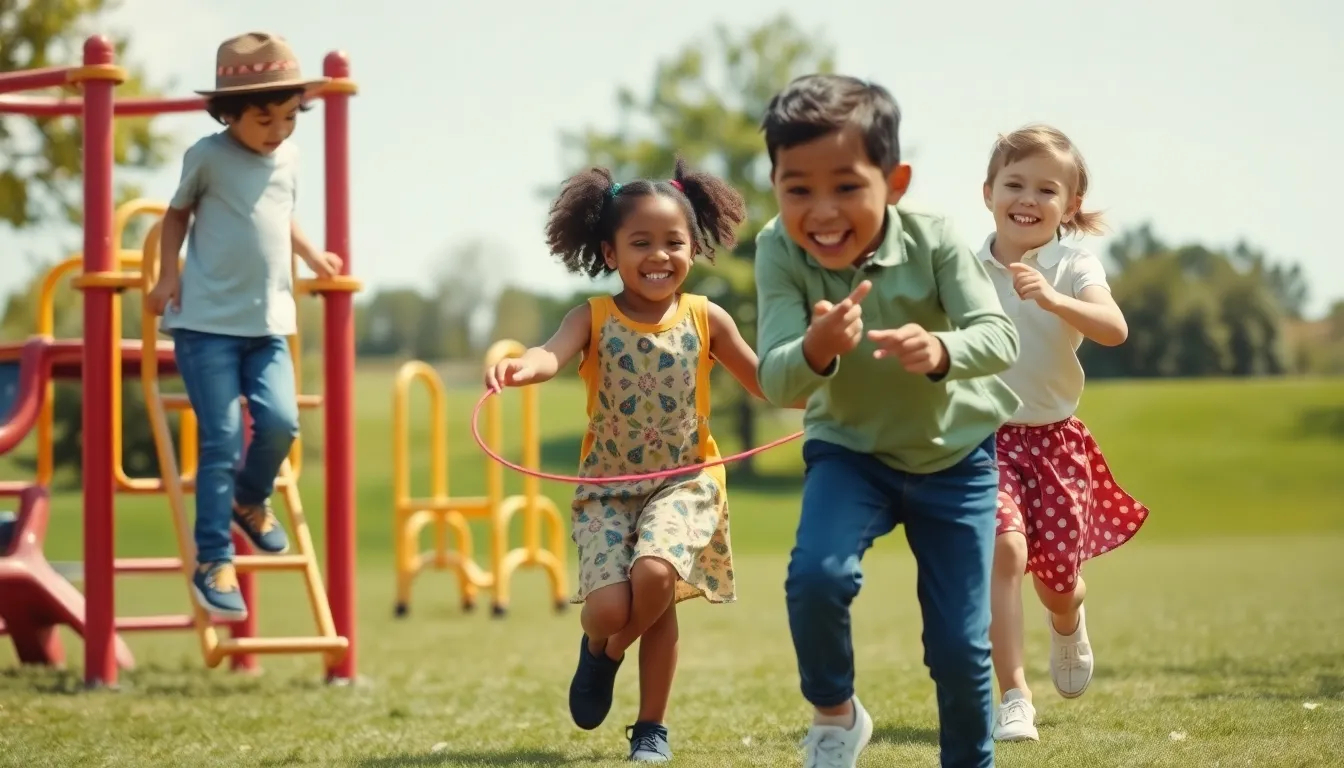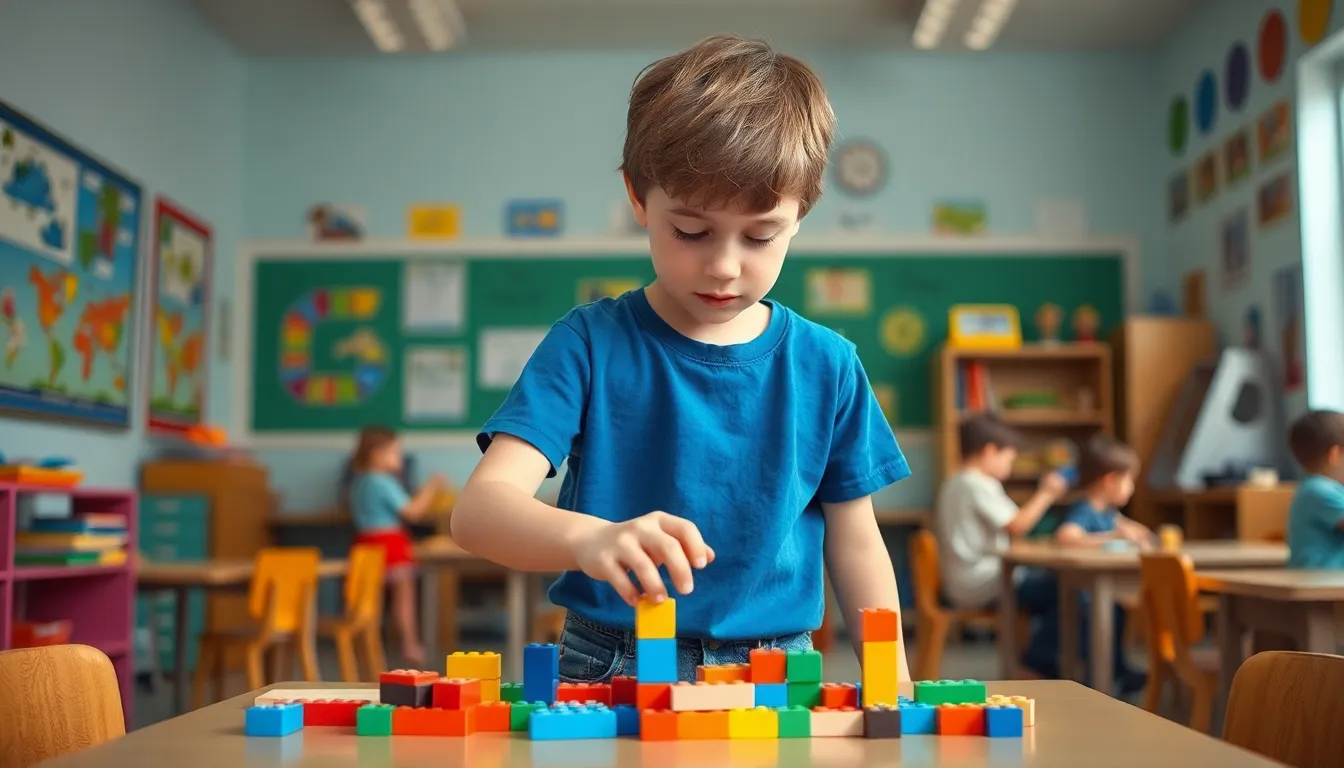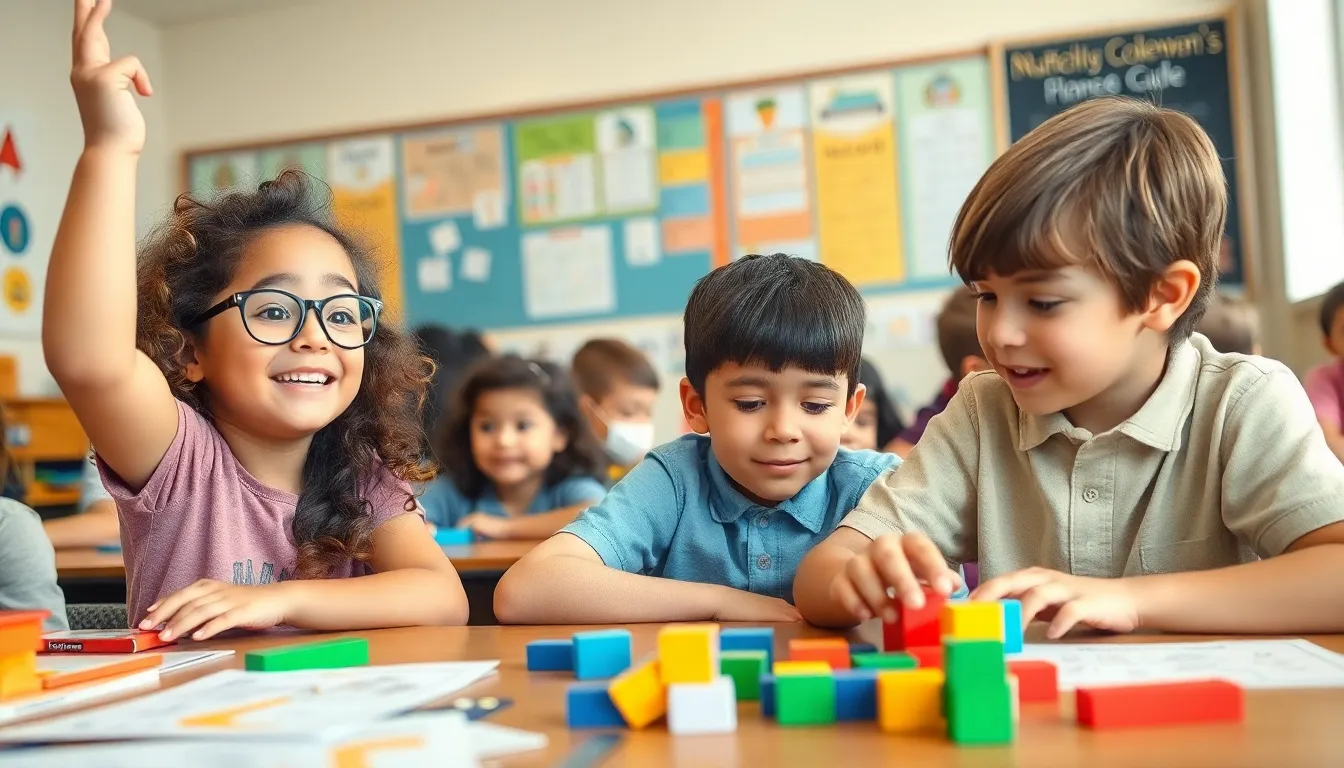When it comes to engaging young minds, not all activities are created equal. Developmentally appropriate activities are like the Goldilocks of playtime—just right for fostering growth and learning. They cater to kids’ unique stages of development, ensuring they’re not bored to tears or overwhelmed by adult-level tasks.
Table of Contents
ToggleUnderstanding Developmentally Appropriate Activities
Developmentally appropriate activities play a crucial role in fostering children’s growth. Tailoring these activities to each child’s developmental stage enhances their learning experiences.
Definition and Importance
Developmentally appropriate activities refer to learning experiences designed considering a child’s age, interests, and abilities. These activities promote optimal growth by aligning with children’s physical, emotional, social, and cognitive development. Engaging children in such activities maintains their interest and motivation, preventing boredom or frustration. Research indicates that children learn best when they encounter challenges that match their skill levels, reinforcing the importance of following individual developmental trajectories.
Key Principles
Key principles of developmentally appropriate activities include understanding individual differences and actively engaging children. These principles emphasize the need for educators to recognize each child’s unique strengths and challenges. Activities should also encourage exploration, allowing children to learn through play and interaction. Fostering meaningful relationships with peers and adults promotes social development. Continued assessment of children’s progress ensures that activities remain tailored and relevant, adapting to their evolving needs.
Types of Developmentally Appropriate Activities

Developmentally appropriate activities encompass various types, each tailored to support children’s growth across different domains. Engaging children in suitable activities fosters their overall development and enhances learning experiences.
Physical Activities
Physical activities promote motor skills while encouraging children to explore their environments. Activities such as climbing, running, or dancing help develop balance and coordination. Children engage in these activities through play, which enhances their strength and endurance. It challenges their physical limits and sparks creativity. Specific examples include obstacle courses and games like tag or hopscotch. These activities motivate children to be active while having fun.
Cognitive Activities
Cognitive activities develop thinking skills and support problem-solving abilities. Engaging children in puzzles, memory games, or storytelling promotes logical reasoning and critical thinking. Activities that incorporate shapes, colors, and numbers build foundational math and literacy skills. Children gain hands-on learning experiences through manipulative toys or construction blocks. Lessons that encourage exploration and curiosity foster a love for learning and provide opportunities for cognitive growth.
Social-Emotional Activities
Social-emotional activities help children build relationships while understanding their feelings. Group games and cooperative tasks teach teamwork and conflict resolution skills. Children express their emotions through role-playing and dramatic play scenarios, allowing them to develop empathy and interpersonal skills. Activities centered on sharing and taking turns encourage positive social interactions. Emphasis on nurturing friendships fosters a supportive environment where children feel secure and valued.
Selecting Developmentally Appropriate Activities
Selecting developmentally appropriate activities requires a keen understanding of each child’s unique growth trajectory. These activities should encourage engagement, allowing for both challenge and enjoyment.
Assessing Child Development Stages
Assessing child development stages involves observing behaviors and skills at various points in time. Caregivers can utilize established developmental milestones as benchmarks. These benchmarks typically cover physical, cognitive, and social-emotional domains. For instance, a 3-year-old may begin to exhibit parallel play while a 5-year-old may engage more cooperatively. Regular assessments help identify strengths and areas for growth, shaping decisions on suitable activities.
Tailoring Activities to Individual Needs
Tailoring activities to individual needs ensures that each experience resonates with a child’s interests and abilities. Gathering insights from observations allows caregivers to create personalized learning experiences. Preferences can range from favorite topics to preferred interaction styles. For example, a child passionate about animals might enjoy a nature scavenger hunt. Adjusting complexity levels guides children toward success without boredom. Engaging children through their interests leads to deeper learning and connection.
Benefits of Developmentally Appropriate Activities
Developmentally appropriate activities offer numerous advantages for young children, enhancing their overall learning and well-being. Engaging in these tailored activities fosters optimal development across various domains.
Enhancing Learning Experiences
Learning experiences directly impact children’s cognitive growth. Engaging children in hands-on activities promotes critical thinking skills while encouraging creativity. Participating in group discussions can help boost verbal skills, allowing children to articulate thoughts clearly. Interactive play enables children to connect concepts, enhancing retention of knowledge. Through exploration, they discover relationships between different ideas, ultimately leading to deeper understanding.
Promoting Well-Being
Well-being is significantly influenced by developmentally appropriate activities. Engaging in social-emotional activities helps children manage their feelings while developing empathy. Group games encourage cooperation, fostering important interpersonal skills. Participating in physical activities boosts mood and energy levels, contributing to overall happiness. When children feel engaged and understood, their self-esteem flourishes, leading to a positive outlook on learning and relationships.
Developmentally appropriate activities play a crucial role in shaping children’s growth and learning experiences. By recognizing each child’s unique developmental stage and interests, caregivers can create engaging and enriching environments. Tailoring activities to individual needs not only fosters a love for learning but also enhances children’s emotional and social skills.
When children engage in activities that resonate with them, they develop confidence and curiosity. This personalized approach ensures that learning remains enjoyable and effective. Ultimately, the right activities can transform a child’s educational journey, laying a strong foundation for lifelong learning and positive relationships. Embracing developmentally appropriate practices is essential for nurturing well-rounded, happy, and resilient children.



